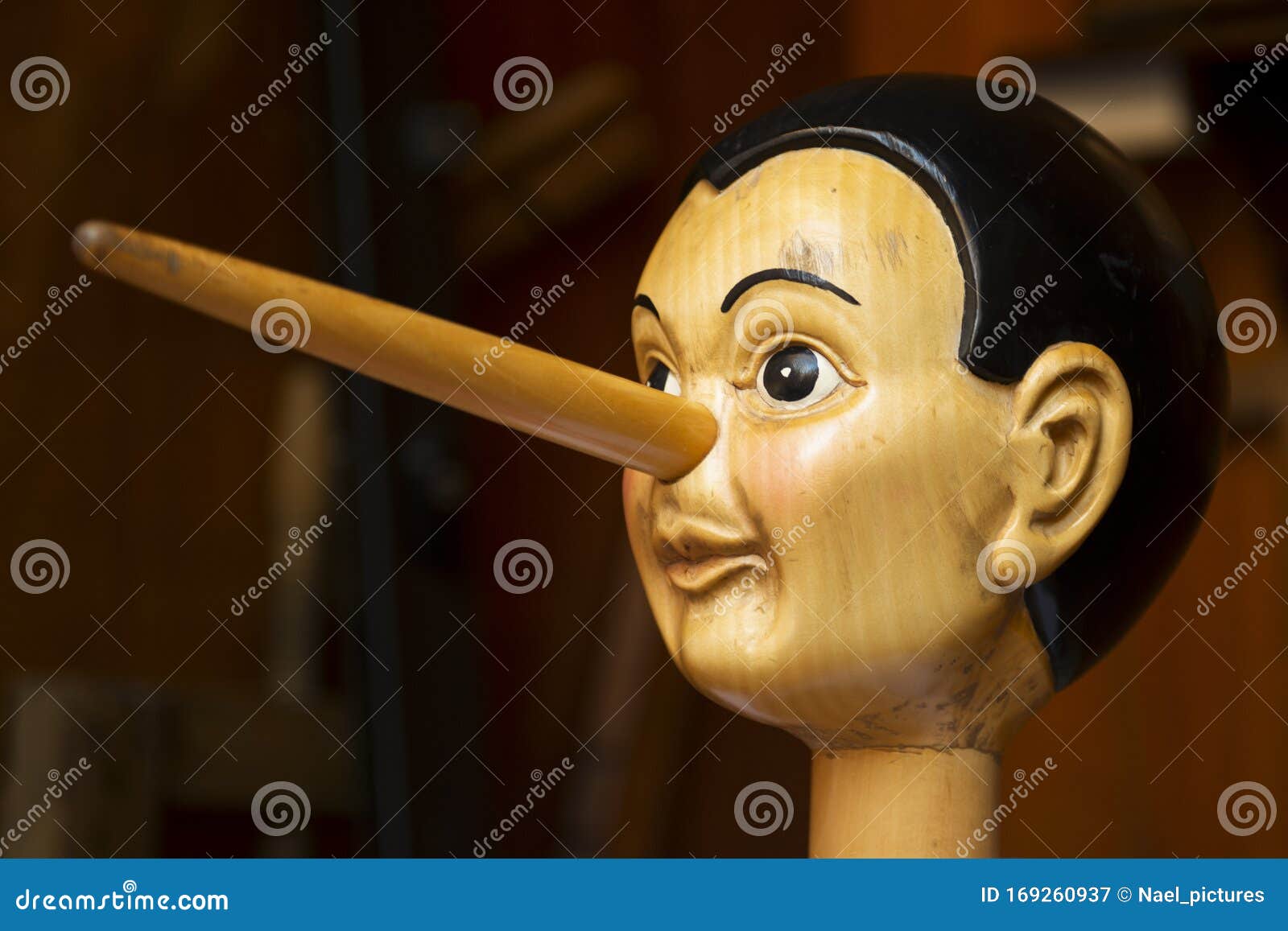

Pinocchio's nose is his best-known characteristic. In the Disney version, the appearance is different the character is dressed in Tyrolean style, with Lederhosen and a hat with a feather. In the novel, Pinocchio is often depicted with a pointy hat, a jacket, and a pair of colored, knee-length pants. In the last chapter, out of the mouth of The Terrible Dogfish with Geppetto, Pinocchio finally stops being a puppet and becomes a real boy (thanks to the intervention of the Fairy in a dream). Pinocchio transforms the novel: he promises The Fairy with Turquoise Hair to become a real boy, flees with Candlewick to the Land of Toys, becomes a donkey, joins a circus, and becomes a puppet again. Because of these characteristics, he often finds himself in trouble. His nose becomes longer when lying to others. He often gets carried away by bad company and is prone to lying. However, the piece of wood from which he is derived is animated, and so Pinocchio moves independently. Pinocchio is a wooden marionette (a puppet that is manipulated with wires) and not a hand puppet (directly controlled from inside by the puppeteer's hand). He shut his eyes, opened his mouth, stretched his legs, gave a long shudder, and hung stiff and insensible. And the swinging gave him atrocious spasms.His breath failed him and he could say no more. Ī tempestuous northerly wind began to blow and roar angrily, and it beat the poor puppet from side to side, making him swing violently, like the clatter of a bell ringing for a wedding. Pinocchio's enemies, the Fox and the Cat bind his arms, pass a noose around his throat, and hang him from the branch of an oak tree. It concluded with the puppet's execution. Collodi originally intended the story, which was first published in 1881, to be a tragedy. Pinocchio's bad behavior, rather than being charming or endearing, is meant to serve as a warning.

In the original tale, Collodi describes him as a "rascal," "imp," " scapegrace" (mischievous or wayward person), "disgrace," "ragamuffin," and "confirmed rogue," with even his father, carpenter Geppetto, referring to him as a "wretched boy." Upon being born, Pinocchio immediately laughs derisively in his creator's face, whereupon he steals the old man's wig. Pinocchio is known for having a short nose that becomes longer when he is under stress (chapter 3), especially while lying. Pinocchio's characterization varies across interpretations, but several aspects are consistent across all adaptations: Pinocchio is a puppet, Pinocchio's maker is Geppetto and Pinocchio's nose grows when he lies. Geppetto, the name of Pinocchio's creator and “father,” is the diminutive for Geppo, the Tuscan pronunciation of ceppo, meaning a log, stump, block, stock or stub. The name Pinocchio is a combination of the Italian words pino (pine), and occhio (eye) Pino is also an abbreviation of Giuseppino, the diminutive for Giuseppe (the Italian form of Joseph) one of the men who greatly influenced Collodi in his youth was Giuseppe Aiazzi, a prominent Italian manuscript specialist who supervised Collodi at the Libreria Piatti bookshop in Florence. Collodi often used the Italian Tuscan dialect in his book. His story has been adapted into many other media, notably the 1940 Disney film Pinocchio. Pinocchio is a cultural icon and one of the most reimagined characters in children's literature. He is known for his long nose, which (on only one occasion in the novel, but more frequently in most adaptations) grows when he lies. He was created as a wooden puppet but he dreams of becoming a real boy.

Pinocchio was carved by a woodcarver named Geppetto in a Tuscan village. Pinocchio ( / p ɪ ˈ n oʊ k i oʊ/ pin- OH-kee-oh, Italian: ) is an Italian fictional character and the protagonist of the children's novel The Adventures of Pinocchio (1883) by Italian writer Carlo Collodi of Florence, Tuscany.


 0 kommentar(er)
0 kommentar(er)
